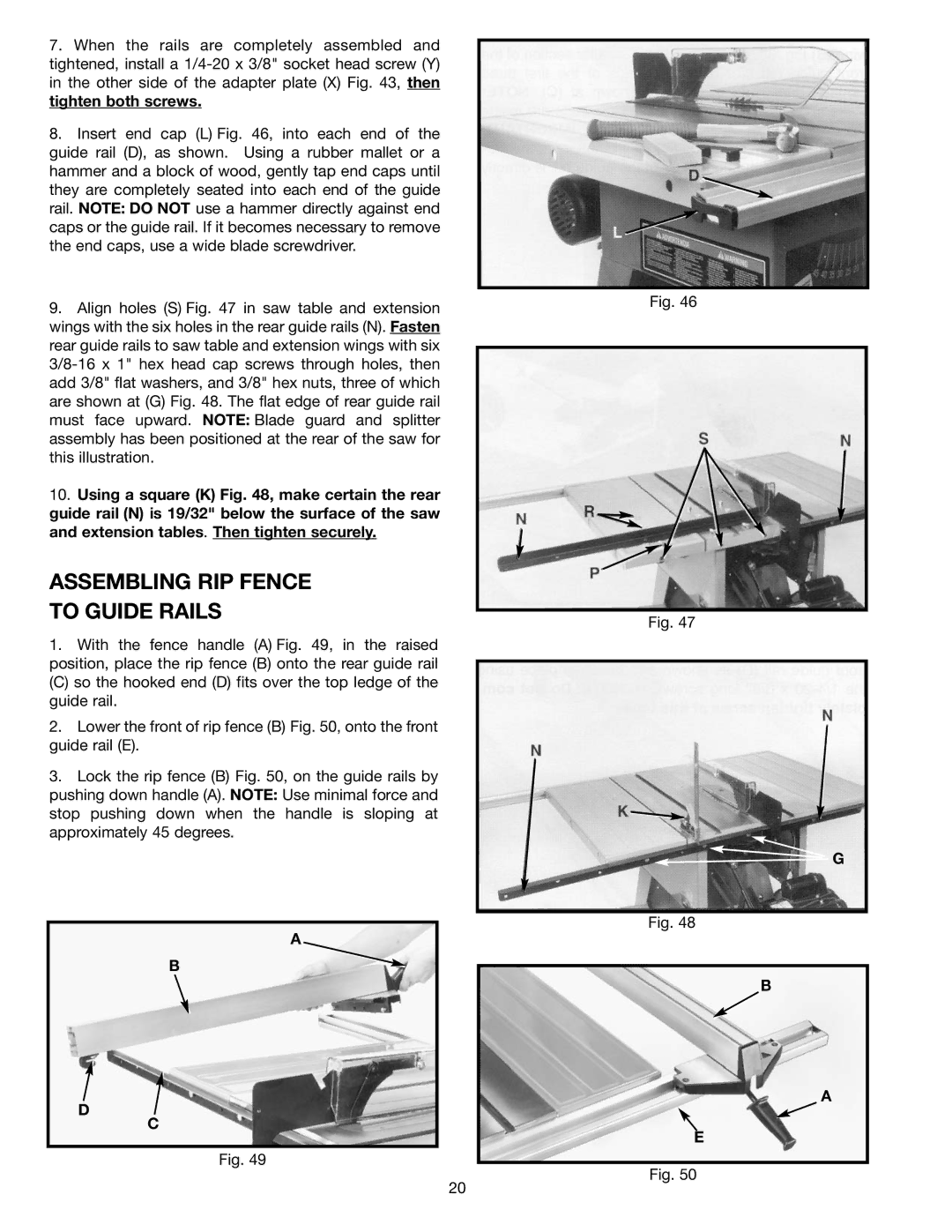
7.When the rails are completely assembled and tightened, install a
8.Insert end cap (L) Fig. 46, into each end of the guide rail (D), as shown. Using a rubber mallet or a hammer and a block of wood, gently tap end caps until they are completely seated into each end of the guide rail. NOTE: DO NOT use a hammer directly against end caps or the guide rail. If it becomes necessary to remove the end caps, use a wide blade screwdriver.
9.Align holes (S) Fig. 47 in saw table and extension wings with the six holes in the rear guide rails (N). Fasten rear guide rails to saw table and extension wings with six
10.Using a square (K) Fig. 48, make certain the rear guide rail (N) is 19/32" below the surface of the saw and extension tables. Then tighten securely.
ASSEMBLING RIP FENCE
TO GUIDE RAILS
1.With the fence handle (A) Fig. 49, in the raised position, place the rip fence (B) onto the rear guide rail
(C) so the hooked end (D) fits over the top ledge of the guide rail.
2.Lower the front of rip fence (B) Fig. 50, onto the front guide rail (E).
3.Lock the rip fence (B) Fig. 50, on the guide rails by pushing down handle (A). NOTE: Use minimal force and stop pushing down when the handle is sloping at approximately 45 degrees.
A
B
D![]()
C
Fig. 49
Fig. 46
Fig. 47
G
Fig. 48
B
A
E
Fig. 50
20
